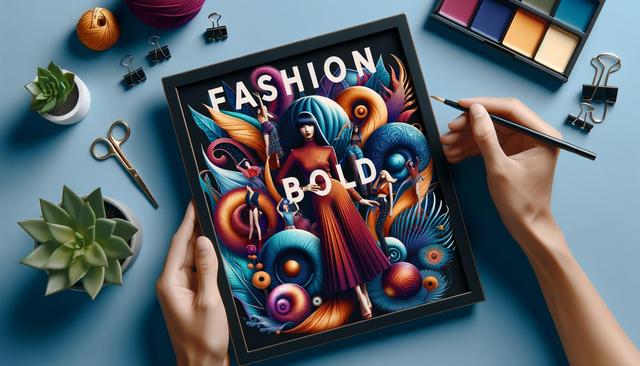
Redefining Style: How Social Media Influencers Are Setting New Fashion Standards
The Rise of Individualism in Fashion
In today’s style landscape, fashion is less about fitting into predefined molds and more about personal expression. The influence of traditional fashion houses is still present, but the spotlight has shifted toward individuals who use clothing as a medium of identity. Social media has been instrumental in this shift, empowering everyday users and influencers alike to share their unique looks with a global audience. This democratization of fashion has led to a surge in styles that were once considered unconventional—think neon colors paired with vintage denim, or gender-fluid silhouettes challenging long-held norms.
Key to this transformation is the boldness with which individuals approach their wardrobes. What was once labeled as “too much” is now celebrated as a statement. Influencers are no longer simply following trends; they are setting them by embracing:
- Layered textures and clashing patterns
- Statement accessories that command attention
- Unisex garments that defy traditional gender roles
This celebration of individuality is redefining modern fashion, making space for creativity and authenticity in everyday wear.
Social Media’s Role in Shaping Style Trends
Platforms like Instagram, TikTok, and Pinterest have become dynamic runways where style is shared, replicated, and reimagined in real time. These digital spaces allow influencers to build personal brands rooted in distinct aesthetics—from streetwear minimalism to full-blown maximalist glam. What sets them apart is not just the clothing they wear, but the narrative they create around it. A post isn’t just an outfit; it’s a story, a mood, or a cultural statement.
Influencers often drive trends faster than traditional fashion cycles ever could. Through daily outfit posts, styling tips, and behind-the-scenes content, they offer followers an intimate look at how style evolves. Some of the most impactful shifts have stemmed from these online interactions:
- Revival of Y2K fashion through nostalgic content
- Promotion of sustainable and ethical clothing brands
- Normalization of thrifted and secondhand fashion
These platforms have amplified voices that challenge mainstream fashion norms, giving visibility to styles that might never have made it onto a traditional runway.
Breaking Down Gender Barriers in Clothing
One of the most significant shifts in fashion norms today is the erosion of gender-specific clothing categories. Influencers and fashion-forward individuals are increasingly embracing garments that speak to comfort, design, and expression rather than adhering to binary labels. This change is not just aesthetic—it’s cultural. By wearing what feels right instead of what’s expected, people are expanding the conversation around identity and self-expression.
Popular examples of this trend include:
- Men wearing skirts, nail polish, or flowing fabrics
- Women adopting tailored suits and combat boots as everyday wear
- Non-binary individuals blending masculine and feminine elements with ease
This shift is helping to normalize fashion as a fluid form of communication rather than a rigid set of rules. Designers are also responding by releasing collections that are intentionally unisex, reflecting a broader move toward inclusivity and freedom in personal style.
Sustainability and the Ethical Fashion Movement
As bold fashion becomes more prominent, so does the awareness around its impact. Many influencers champion not only unique aesthetics but also responsible consumption. The rise of slow fashion is challenging the fast-paced, waste-heavy practices that have long dominated the industry. Social media has played a crucial role here as well, making it easier for consumers to discover ethical brands and learn about eco-friendly practices.
Key components of this movement include:
- Supporting local and independent designers
- Choosing garments made from organic or recycled materials
- Encouraging clothing swaps and upcycling
Influencers who prioritize sustainability bring attention to how style choices affect the planet. Their content often includes tips for building a capsule wardrobe, re-styling old favorites, or shopping mindfully. This helps followers see that bold fashion doesn’t have to come at the cost of environmental responsibility.
The Power of Community and Representation
Perhaps one of the most transformative aspects of fashion’s new direction is the sense of community it fosters. Social media has made it easier than ever for individuals to find like-minded people who share their sense of style, cultural background, or values. This has led to the rise of micro-communities centered around specific aesthetics, such as Afro-futurism, cottagecore, or techwear.
Representation matters deeply in this space. Seeing someone who looks like you, shares your experiences, or expresses themselves in a way you hadn’t thought possible can be incredibly empowering. Influencers from diverse backgrounds are helping to reshape what is considered fashionable, proving that style is not about conformity but about authenticity.
Through collaborations, hashtags, and style challenges, these communities continue to grow, offering support and inspiration to anyone looking to redefine their personal style. Whether it’s through bold colors, unconventional silhouettes, or vintage flair, today’s fashion is a collective celebration of individuality and courage.
Conclusion: Embracing Style Without Limits
Fashion is no longer confined to the runways or dictated solely by seasonal trends. It belongs to the people who wear it, and thanks to the rise of social media, those people now have a global stage. Influencers and style-forward individuals are leading the charge in redefining public fashion norms by embracing authenticity, inclusivity, and creativity. As this movement grows, it encourages everyone to explore their own style with confidence and consciousness—one bold outfit at a time.